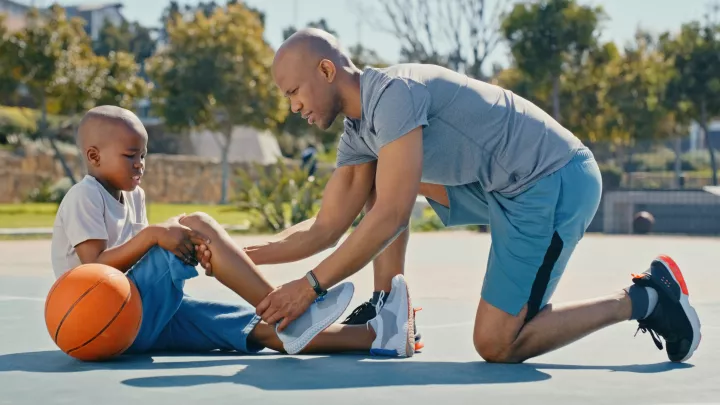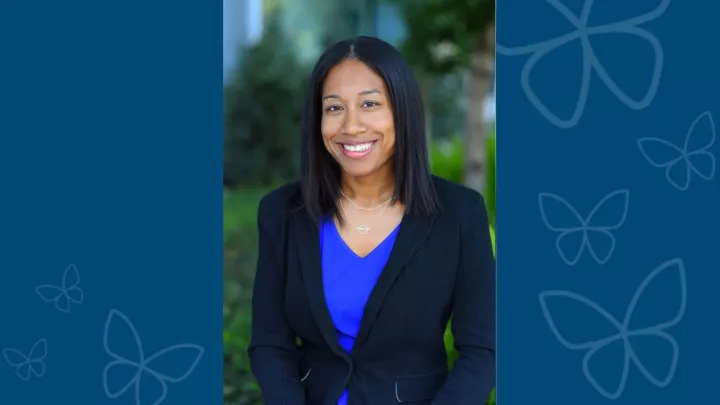Bone and Soft Tissue Tumor Treatments
It’s understandable to have concerns if your child has a bone or soft tissue tumor. Even noncancerous (benign) tumors may require treatment, and you want to make sure your child is in the best hands. Our Bone and Soft Tissue Tumors Program is one of the country’s largest and most comprehensive programs.
Your child receives exceptional care from orthopedic surgeons dedicated to preserving bone, joints and tissue. We help your child get better and stay active.
Does Your Child Need Orthopedic Surgery?
A child who has a cancerous (malignant) bone or soft tissue tumor needs medical care. For some children, chemotherapy or radiation therapy effectively treats cancer without the need for surgery. Other children need one (or both) of these therapies to shrink the tumor before orthopedic surgery.
Some noncancerous (benign) tumors don’t require invasive surgery. Our orthopedic specialists partner with doctors at the Cancer and Blood Disease Institute to develop the most effective treatment plan for your child’s unique condition.
Bone and Soft Tissue Tumor Treatments
Surgeons at our Jackie and Gene Autry Orthopedic Center specialize in the latest surgical treatments for bone and soft tissue tumors, including:
- Limb salvage procedures
- Van Nes rotationplasty
- Joint preservation and joint replacement surgery
- Bone grafts
Limb salvage procedures
During surgery to remove cancerous tumors like sarcomas, surgeons often have to remove a small amount of healthy bone surrounding a tumor. This approach ensures all of the cancerous tumor is gone. As a result, a child’s treated limb may be shorter than the other one.
We use a implantable prosthetic device to make leg limbs equal in length. Here’s what you should know about this device:
- The implant has magnetic nails that are placed inside bone above and below the tumor site.
- You or your child place a programmed magnetic remote control on the skin above the magnetic implant.
- The magnetic controller activates the internal magnetic nail to expand the prosthesis inside the skin. The process takes less than 10 minutes per day.
- With traditional expandable endoprosthesis, your child’s doctor performs repeat surgeries to manually expand the device and grow the limb.
- Precice is a less invasive approach. Your child experiences less pain and trauma and spends less time in the hospital. There’s also less infection risk because your child has fewer surgeries.
- When needed, our doctors partner with orthopedic specialists at our Limb Lengthening and Reconstruction Program.
Van Nes rotationplasty
Our orthopedic surgeons are among a select few in the country with the expertise to perform Van Nes rotationplasty. This complex procedure removes a cancerous tumor located above or below a knee joint, while providing a way for a child to use a prosthetic device after surgery. During this procedure, your child’s surgeon:
- Removes the tumor along with small part of the lower thighbone (femur), the knee and the upper shinbone (tibia), while sparing blood vessels and nerves that go to the lower leg and foot
- Saves the lower leg, ankle and foot
- Rotates the entire lower leg, including the ankle and foot, to a backward position
- Connects the rotated leg and foot to the thighbone so that the ankle joint is level with the other leg’s knee joint
The rotated ankle and foot make an excellent knee joint that secures prosthetic legs. Children who have rotationplasty can run, play sports and be more active than those who have a complete amputation. Your child’s doctor may recommend rotationplasty if procedures like limb salvage, joint replacement or endoprosthesis aren’t options.
Joint preservation and joint replacement surgery
Our doctors use advanced techniques to remove bone tumors while sparing the joint. When joint preservation isn’t possible, we perform joint replacement surgery.
Bone grafts
Some children with tumors need bone grafts to fill in gaps created when doctors remove diseased bone. Bone for these grafts may come from bone bank donors or from your child’s fibula (calf bone). A living graft continues to grow and strengthen along with other bone over time and may help avoid additional surgeries later.
Dedicated Inpatient Rehabilitation Services
After certain surgeries, your child receives focused, compassionate care at one of the nation’s largest and most established pediatric inpatient rehabilitation centers. Physical and occupational therapists at the Peterson Rehabilitation Center help your child recover mobility and function quickly.
On-Site Medical Device and Prosthetic Services
Your child may need support devices, such as braces, splints, crutches, walkers or prostheses. For your convenience, we have representatives from medical equipment companies at our hospital. These experts can ensure the proper fit for your child and make ongoing adjustments as your child grows.


